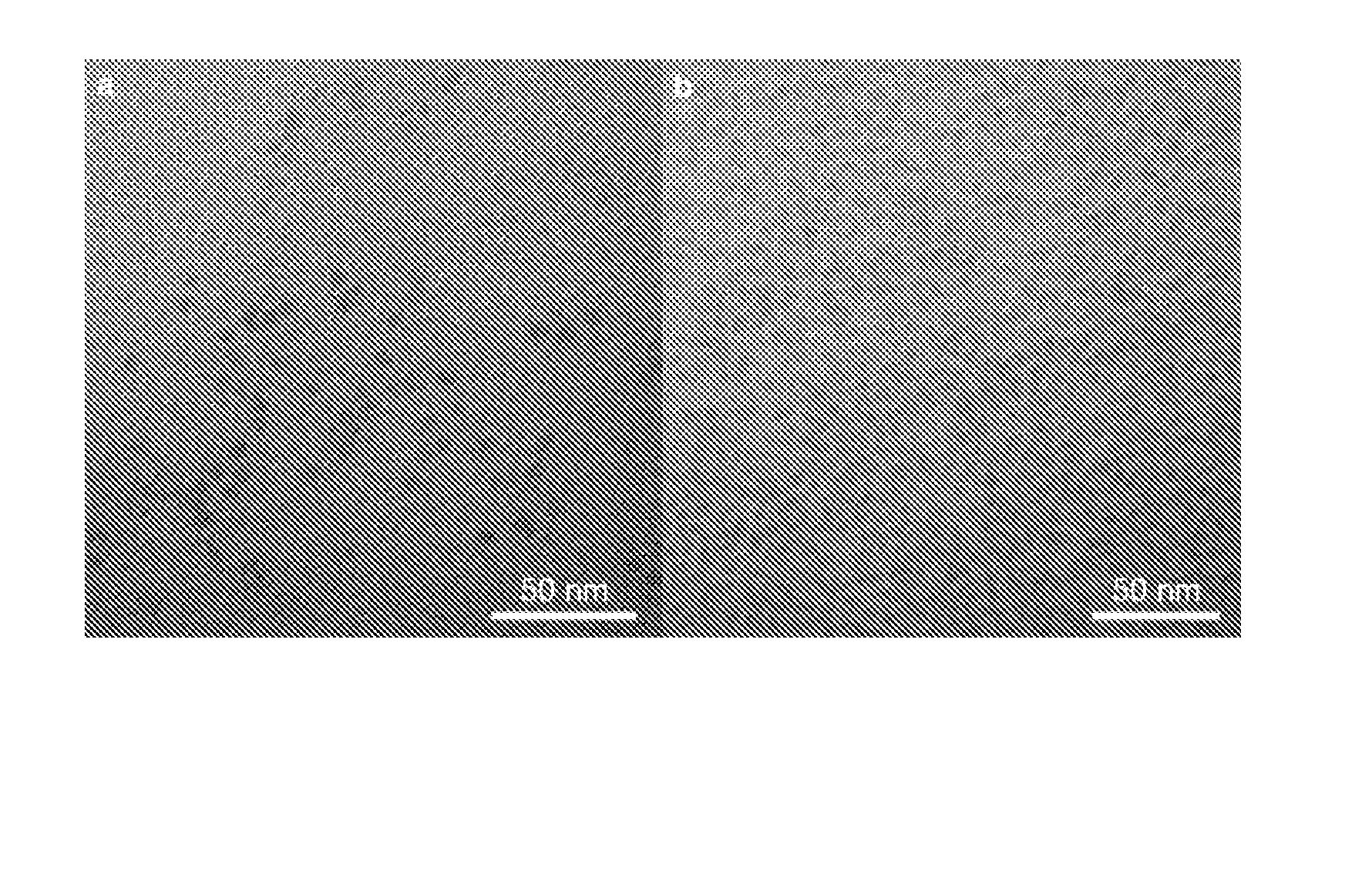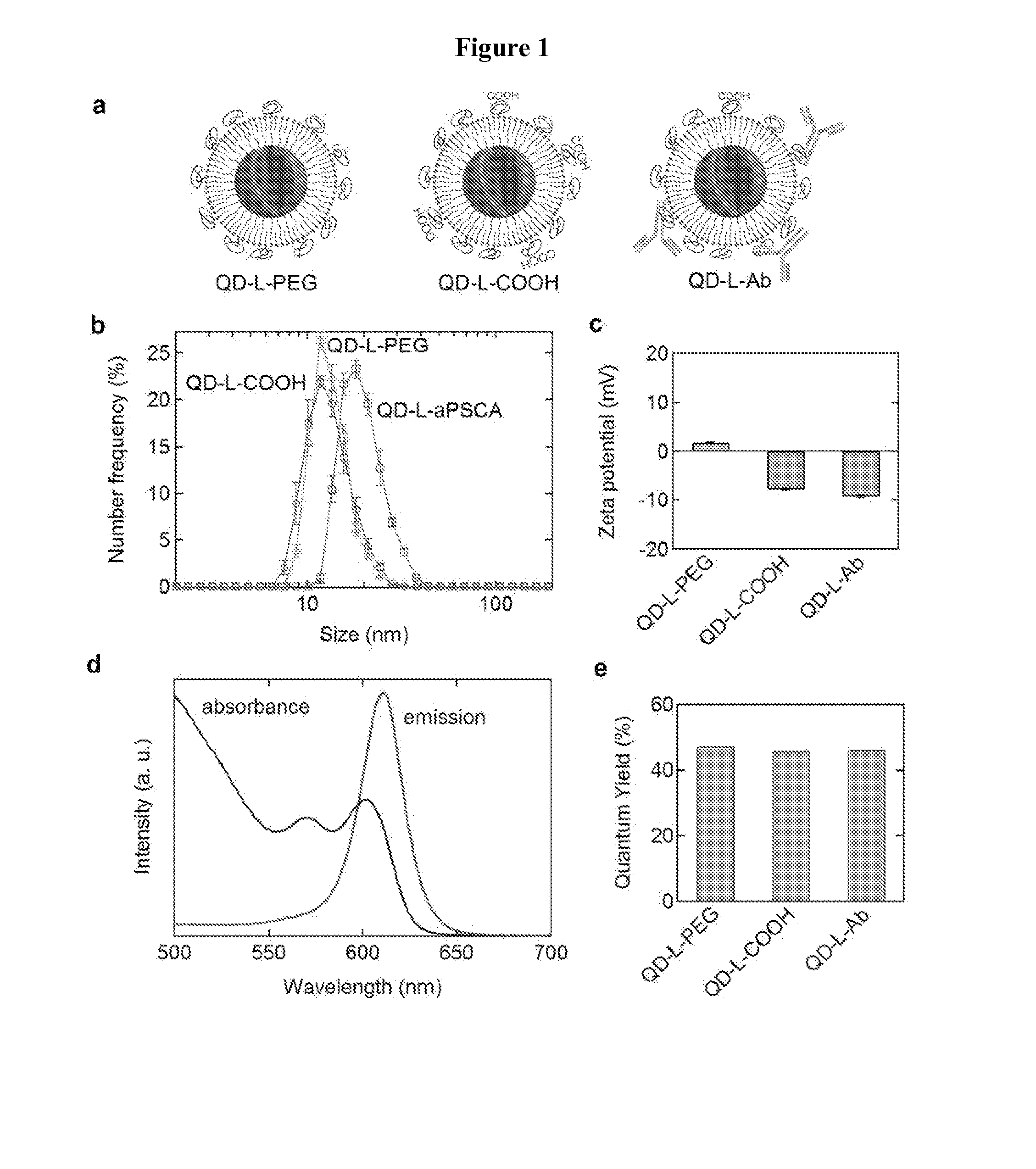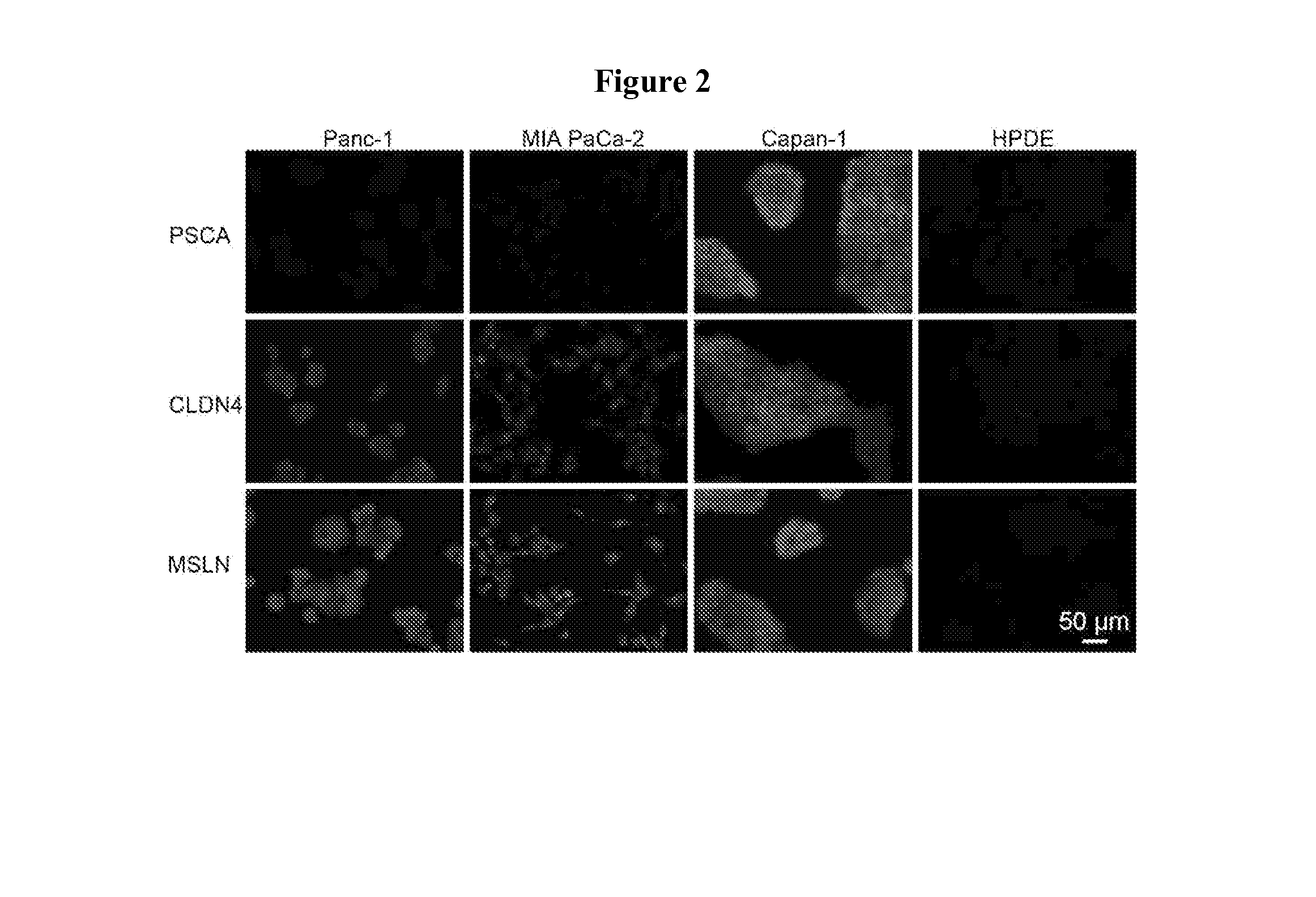Cuinse/zns nir-quantum dots (QDS) for biomedical imagiing
a technology of cuinse and zns, applied in the field of cuinse/zns nir-quantum dots (qds) for biomedical imagiing, can solve the problem of not being able to grow an effective passivation layer on cuinsub>, and achieve the effect of improving water stability and quantum yield
- Summary
- Abstract
- Description
- Claims
- Application Information
AI Technical Summary
Benefits of technology
Problems solved by technology
Method used
Image
Examples
example 1
Profiling of Cancer Biomarkers
Methods
Synthesis of QDs
[0035]Most experiments were performed using CdSe / (Cd,Zn)S core / shell QDs with an emission wavelength of about 610 nm. (Park, J.; Lee, K. H.; Galloway, J. F.; Searson, P. C., Synthesis of Cadmium Selenide Quantum Dots from a Non-Coordinating Solvent: Growth Kinetics and Particle Size Distribution. Journal of Physical Chemistry C 2008, 112, (46), 17849-17854.) (Galloway, J. F.; Park, J.; Lee, K. H.; Wirtz, D.; Searson, P. C., Exploiting Nucleation and Growth in the Synthesis and Electrical Passivation of CdSe Quantum Dots. Science of Advanced Materials 2009, 1, (1), 1-8.) For multiplexing experiments we synthesized CdSe / (Cd,Zn)S core / shell QDs with an emission wavelength of 524 nm and CuInSe / ZnS core / shell QDs with an emission wavelength of 707 nm.
Water Solubilization of QDs
[0036]Water soluble QDs were obtained by forming a lipid monolayer composed of MHPC / DPPE-PEG2k (80:20 mol %) or MHPC / DPPE-PEG2k / DPPE-PEG2k-COOH (80:15:5 mole %)....
example 2
CuInxSey / ZnS QDs for Biomedical Imaging
[0062]For most applications of QDs, the addition of a wide band gap shell is required to passivate surface states and increase the quantum yield. As we show below, the CuInxSey cores have limited stability and hence the shell also serves to isolate the core from the environment. The emission peak at about 745 nm (FIG. 7a) implies a band gap of about 1.66 eV. This is significantly larger than the band gap of 1.26 eV for CuIn3Se5 and implies significant confinement. (S. B. Zhang, S. H. Wei, A. Zunger, H. Katayama-Yoshida, Phys Rev B 1998, 57, 9642.) We selected ZnS as a passivation layer since it has a bulk band gap of about 3.68 eV, and is commonly used to passivate II-VI QDs. In addition, the selection of ZnS allows us to avoid possible toxicity concerns by avoiding elements such as cadmium and arsenic. ZnS passivation of CuInxSey QDs has been achieved after washing and resuspending the CuInxSey cores in ODE / OA prior to introducing the shell pr...
example 3
[0086]QD Synthesis
TABLE 1Summary of 101 synthesis experiments for CIS and CIS / ZnS QDs.SurfactantsCoreCore / shell(number ofsynthesissynthesisexperiments)with QY > 15%with QY > 30%CommentsOA (36)19% 0%QY decreasedafter ZnSpassivation (averagedecrease 3%, max.decrease 13%)TOPO / HDA52%60%QY = 32 ± 14(23)(maximum 50%)one pot withN / A60%QY = 32 ± 11TOPO / HDA(maximum 60%)(42)
[0087]The Cu, In, Se, Zn, and S precursors were the same in all experiments. 0.045 mmol CuI and 0.18 mmol InI3 were mixed in 3 ml of TOP; 150 μl (TMS)2Se; 115 μl diethyl zinc; 227 μl bis(trimethylsilyl)sulfide in TOP.
[0088]1. Olyamine (OA)
[0089]Cores: precursors injected into OA (T=260-290° C.; t=15-40 s). Annealing (t=0-1 h) was performed at 100° C. Cores washed with methanol, acetone, ethanol, hexane, or chloroform. Synthesis of ZnS in TOPO / HDA (T=100-240° C.) Annealing (t=0-10 h) was performed at temperatures from 100-240° C. CIS / ZnS QDs were washed with methanol, acetone, ethanol, hexane, or chloroform.
[0090]2. Triocty...
PUM
| Property | Measurement | Unit |
|---|---|---|
| hydrodynamic diameter | aaaaa | aaaaa |
| FWHM | aaaaa | aaaaa |
| FWHM | aaaaa | aaaaa |
Abstract
Description
Claims
Application Information
 Login to View More
Login to View More - R&D
- Intellectual Property
- Life Sciences
- Materials
- Tech Scout
- Unparalleled Data Quality
- Higher Quality Content
- 60% Fewer Hallucinations
Browse by: Latest US Patents, China's latest patents, Technical Efficacy Thesaurus, Application Domain, Technology Topic, Popular Technical Reports.
© 2025 PatSnap. All rights reserved.Legal|Privacy policy|Modern Slavery Act Transparency Statement|Sitemap|About US| Contact US: help@patsnap.com



